Learn how to preserve high-acid foods in a water bath canner for long-term food storage. (Also known as Boiling Water Canning.)
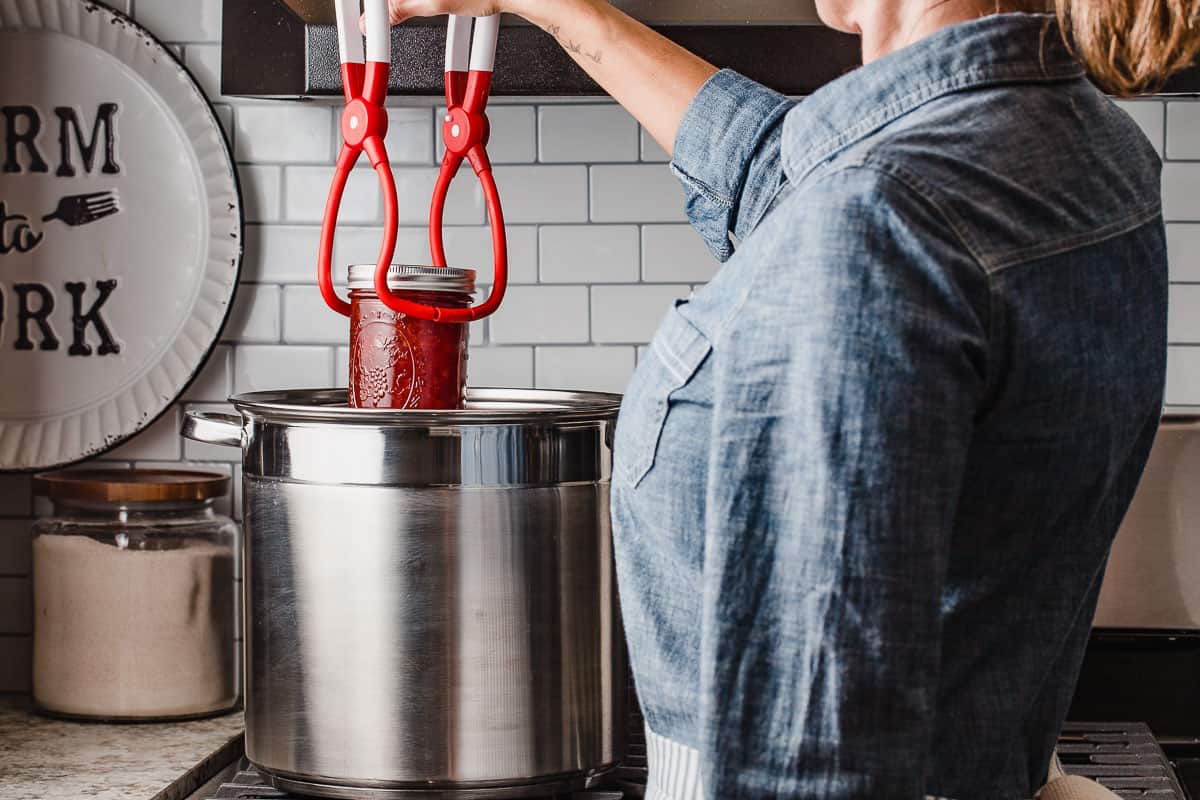
Almost everyone has memories of their family in the kitchen, canning jams, jellies, pickles and other fruits during the summer harvest.
Water bath canning food is a fun and satisfying activity for you to preserve the season's bounty and carry you and your family through, until next year!
Water bath canning is used for foods that are considered high acid foods. Some fruits and recipes that contain an added acid in the form of 5% vinegar can be water bathed canned.
Low acid food such as vegetables, meats and soups must use the pressure canning method.
How canning preserves food
Food spoilage is caused by bacteria, wild yeasts and molds that naturally occur in the environment. They grow just about everywhere but they especially love moist, warm food. Thankfully, these microorganisms can be destroyed by heat.
When high-acid food is properly preserved with the boiling water canning method at (212°F), all living forms of microorganisms are destroyed and air is kept out to prevent recontamination.
So how does canning it work?
Prepared food is packed into a jar, covered with a lid and heated in boiling water long enough to kill any microorganisms. As the food reaches high temperatures, steam releases from the jars. As the jar cools, the steam condenses and the lid creates an airtight, vacuum seal.
What are high-acid foods?
Foods that have a pH level of 4.6 or lower are considered a high-acid food and may be preserved using the boiling water canning method.
Examples of high acid foods:
| lemons | fruit butters |
| pickles | sour cherries |
| berries | peaches |
| apricots | sauerkraut* |
| plums | pears |
| apples | tomatoes* |
| pineapple | ketchup* |
| relish* | preserves, jams, jellies |
*Certain recipes include an acid in the form of 5% acidity vinegar, bottled lemon juice, citric acid and some citrus fruit to ensure the correct pH level is maintained. (ex. some tomato recipes, pickles, sauerkraut)
Is water bath canning tomatoes safe?
Tomatoes for many years were considered a high acid food. However, some varieties may have a pH level greater than 4.6. To ensure a safe pH level for boiling water canning of whole, crushed, or juiced tomatoes, use the following measurements.
- 1 quart of tomatoes - add 2 tablespoons of bottled lemon juice or ½ teaspoon of citric acid.
- 1 pint of tomatoes- add 1 tablespoon of bottled lemon juice or ¼ teaspoon of citric acid.
Acid can be added directly to the jars before filling the jars with product.
Basic equipment needed
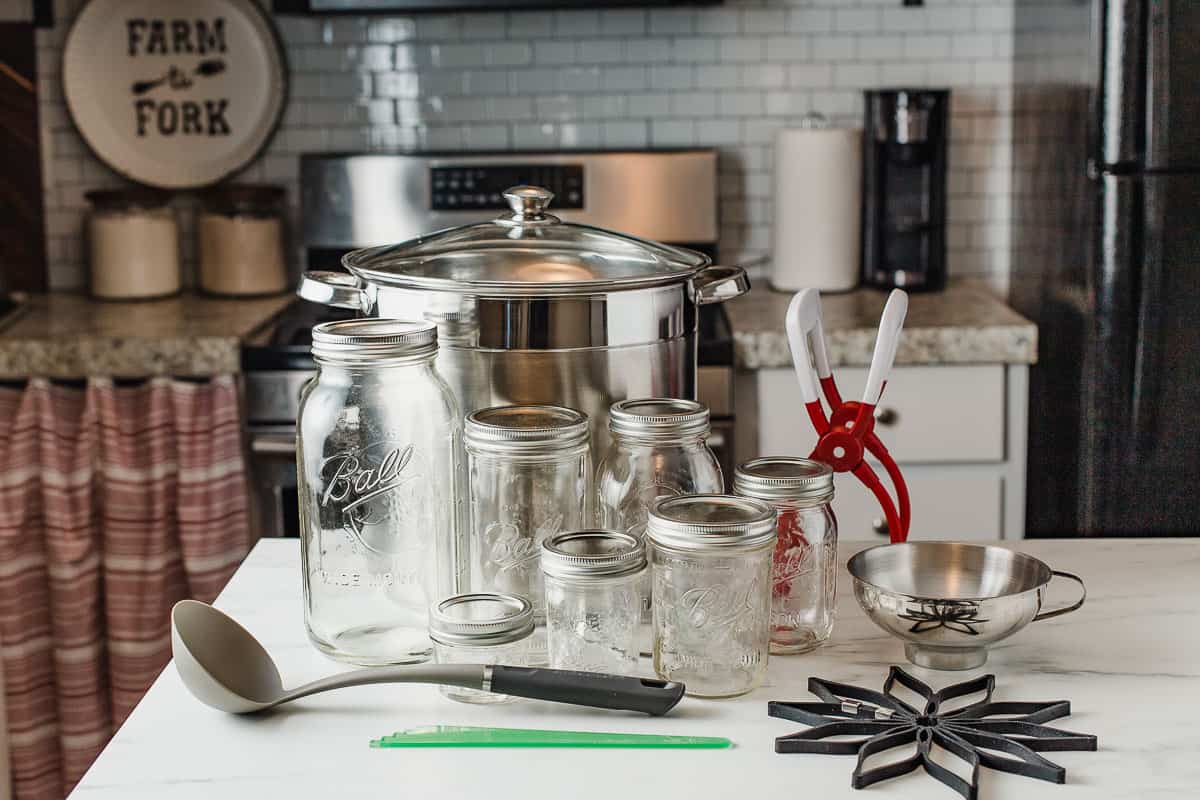
We are a participant in the Amazon Services LLC Associates Program. As an Amazon Associate I earn from qualifying purchases. For more recommended kitchen tools, check out my kitchen essentials page.
BOILING WATER CANNER: Water bath canners are sold with 3 pieces. A lid, a pot and a rack. The most common size is the 21-quart which holds up to 7 quart sized jars. An 11.5 quart holds up to 7 pint sized jars and the 33 quart capacity holds up to 9 quart sized jars.
- LID: The lid is used to trap heat and steam and to keep the water boiling throughout the process.
- POT: The pot must be deep enough to hold the size jars you are processing, with water level 1 to 2 inches over submerged jars. A canner with a flat bottom may be used on gas or electric burners. A canner with a ridged bottom works better on a gas burner.
- RACK: The canning rack keeps the jars off the bottom of the canner during processing. This keeps the jars from the direct heat of the burner and helps the hot water circulate around the jars.
If you already own a large stockpot with a lid, it may not be necessary for you to invest in a water bath canner. Load your stockpot with water and empty jars to verify it is deep enough BEFORE your first canning session. Purchase a silicone canning trivet to keep jars off the bottom of the stockpot, which can also be used for other endeavors in the kitchen.
JARS: There are several sizes of glass canning jars to choose from depending on what you are canning.
- 4 OZ. - Jams, jellies and preserves.
- HALF PINT - Jams, jellies, preserves, chutneys and relishes.
- PINT SIZE - Jams, jellies, preserves, chutneys, relishes and pickles.
- PINT AND A HALF - Pickles, tomatoes, whole and sliced fruit.
- QUART - Tomatoes, fruit juices, whole and sliced fruit.
LIDS AND RINGS: Canning jars are sold in multi packs and come with the appropriate size lid and rings.
Some jars have 2 different size openings to choose from.
Jars and rings can be used over and over, however, lids are ONE-TIME use only. Canning lids are not reusable for new canning sessions. You may however reuse canning lids for storing items in jars.
JAR FUNNEL AND LADLE: A ladle and canning funnel makes transferring the food to the jars easy, clean and efficient.
Make sure the ladle and funnel being used are made on nonreactive material. Silicone, plastic and stainless steel are all considered nonreactive. Aluminum, cast iron and unlined copper are considered reactive cookware.
JAR LIFTER: A jar lifter is used to safely transfer hot jars to and from the canner. Make sure the jar lifter is positioned securely under the rim so that it doesn't slip. The jar lifter is also useful in making sure the jars stay upright and do not tilt during the transfer.
HEADSPACE TOOL: One side of the headspace tool is used to remove air bubbles from the food before processing. The other side is used for measuring headspace in the top of the jar.
Headspace is the amount of space between the top of the food and the top of the jar's rim. Each recipe will specify the correct headspace needed.
The funnel, headspace tool and jar lifter are sold as a set as well as individually.
Altitude adjustment chart
Processing times for water bath canning are typically based on altitudes at or below 1,000 feet above sea level. When water bath canning at altitudes higher than 1,000 feet above sea level, adjust processing time according to this chart.
| Altitude in feet | Increase Processing Time |
| 1,001 to 3,000 | 5 minutes |
| 3,001 to 6,000 | 10 minutes |
| 6,001 to 8,000 | 15 minutes |
| 8,001 to 10,000 | 20 minutes |
Processing time will depend on the size of the jar, the recipe and whether it was hot or raw packed.
Step by step instructions
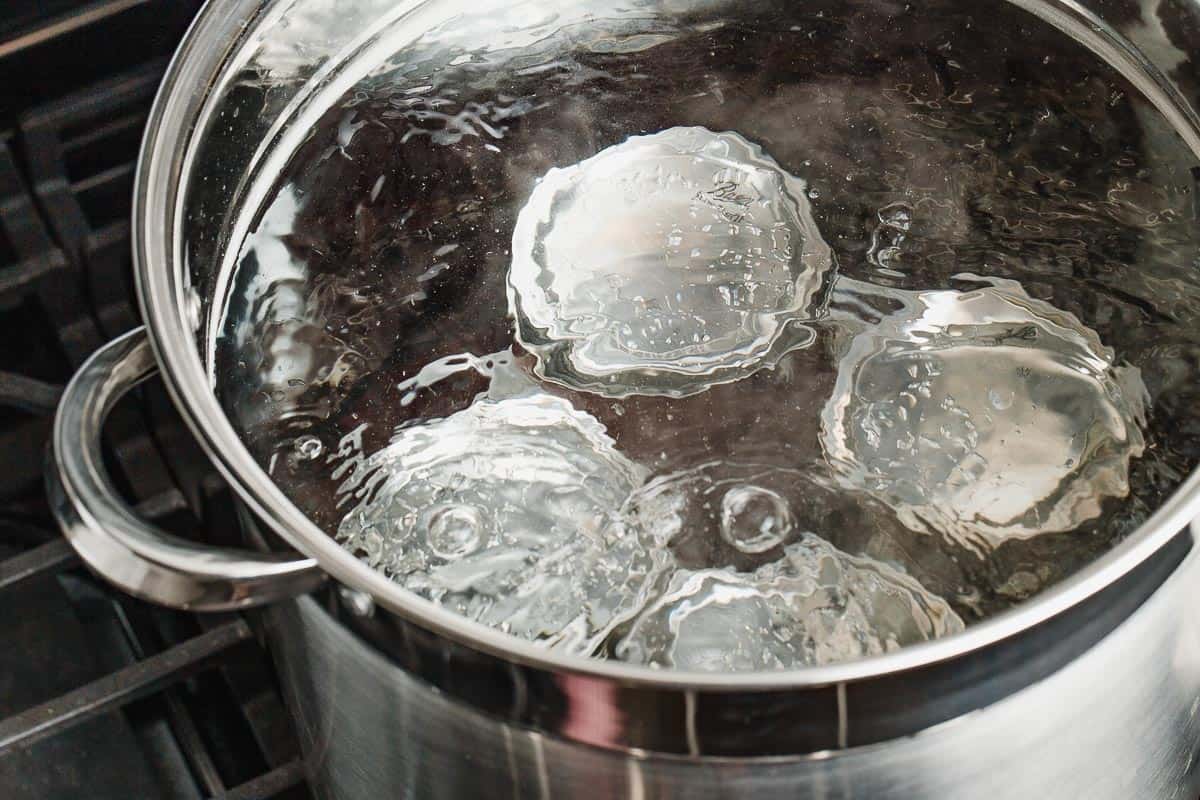
- Prepare jars, rings and lids by washing in warm sudsy water. Inspect each jar for chips and cracks.
- Fill the canner half-way with water and place the silicone canning trivet in the bottom or suspend the canning rack over the water.
- Place a second pot of water on to boil in case more hot water is needed during processing. Keep clean jars warm by placing them in the extra pot of hot water until ready to fill.
- Preheat the water while you are preparing your food. If raw-packing (140°F) or hot-packing (180°F).
- Working with one jar at a time, remove a warm jar from the canner and fill it with food, leaving the appropriate headspace according to your recipe. De-bubble, wipe off rim of jar with a wet napkin and place lid on top. Screw ring on jar until "finger tight".
- Load the filled jar into the canner using a jar lifter. Make sure to keep the jar upright at all times to prevent leakage between the lid and rim. Repeat with remaining jars. If using suspended rack, lower it into the water.
- Add more water to the canner if necessary to cover the jars by 1 inch of water. If processing time is 30 minutes or longer, make sure the jars are covered by 2 inches of water.
- Cover the canner with a lid and cook over high heat until the water reaches a vigorous boil (212°F).
- Set timer for processing time called for in the recipe, adjusting for altitude if necessary. Keep the water at a boil for the entire processing time. If the water stops boiling while processing, bring it back up to a full boil and restart the time. Continue to check and add more boiling water if necessary.
- Once the processing time is up, turn off the heat. Remove the lid and let the jars rest in the canner for 5 minutes to prevent syphoning.
- Use a jar lifter to remove the jars and place them on a kitchen towel, on a heat-safe surface. Make sure there is 1 inch of space in between jars to allow air to circulate. Allow the jars to cool for 12-24 hours before handling.
- Remove the rings and check seals. Wash jars in soapy water, label and date. Store jars without rings to prevent a "false seal".
Tips for success
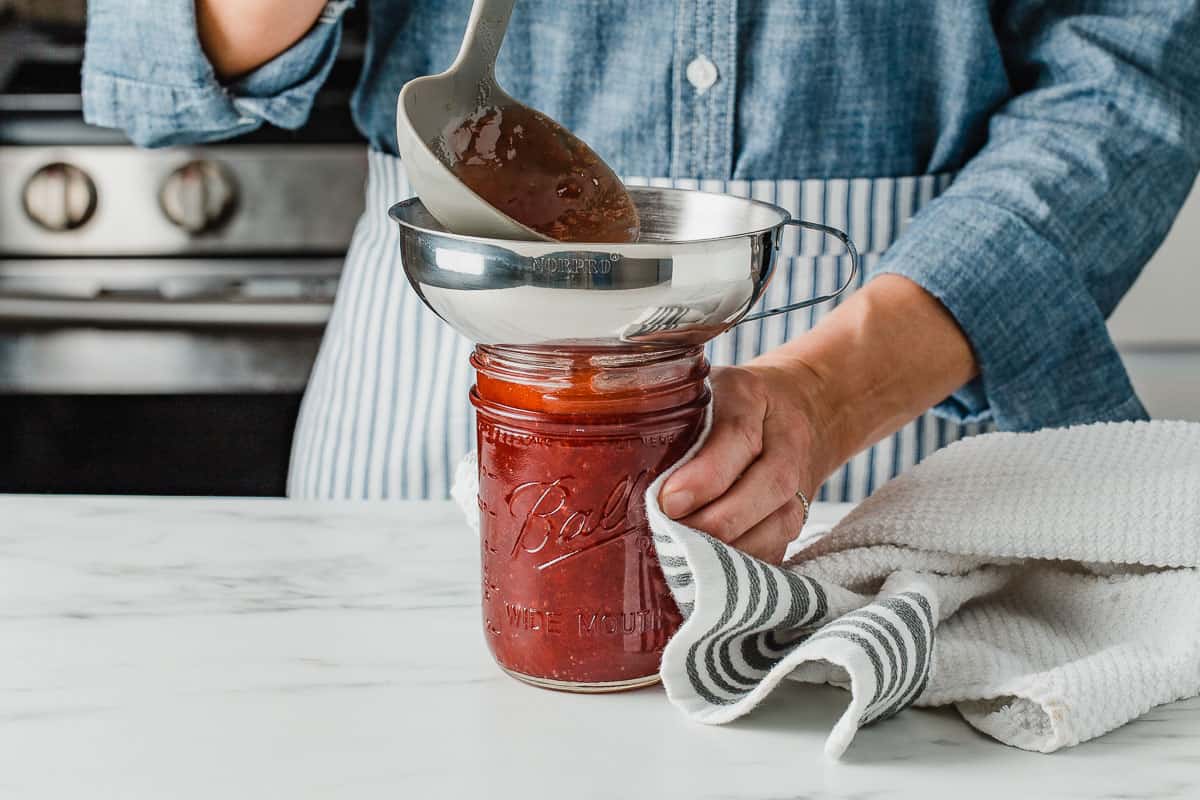
Always wash and inspect jars before canning for small cracks and chips. Wash jars with warm sudsy water or in a dishwasher.
Keep jars warm until ready to fill. The jars and the food need to be around the same temperature in order to avoid shocking the glass and causing it to crack.
Do I need to sterilize canning jars before canning? To sterilize jars, submerge in boiling water for a minimum of 10 minutes, at 0-1,000 feet above sea level. In other words, when recipe processing times are 10 minutes or more at this elevation, pre-sterilization of jars in unnecessary.
If the processing time is less than 10 minutes for your recipe, at 0-1,000 feet above sea level, you have two choices.
- Increase the processing time to 10 minutes, which is safe for most recipes.
- Pre-sterilize jars in boiling water for 10 minutes before filling jars.
After removing the jars from the canner it's important to let them rest, undisturbed, for 12 to 24 hours to will allow the lids to seal on their own. You will know that the lid is properly sealed when the lid is indented and you can pick the jar up by the lid.
Resist the urge to check the seals before 12 hours. If you press down on the lid before it has sealed you can create what it known and a false seal.
What is a "false seal"? A false seal is when the jar appears to be properly sealed but the seal is actually open. This is why it's important to let the jars seal on their own without pressing the lid down.
A false seal can also occur by storing jars with the rings still on. This is why I encourage you to store your jars without the rings. If the lid is loose or comes off when you pick it up, do not eat the contents as it could be unsafe. Use the guide provided by the National Center for Food Preservation to dispose spoiled home canned food properly.
I hope you found this guide to water bath canning helpful and complete. If you have any questions feel free to ask them in the comment section below!
Easy water bath canning recipes
How to Use a Water Bath Canner
Equipment
- Boiling Water Canner
- Canning rack
- Jar lifter
- Canning jars with lids and rings
Instructions
- Prepare jars, rings and lids by washing in warm sudsy water. Inspect each jar for chips and cracks.
- Place a second pot of water on to boil in case more hot water is needed during processing. Keep clean jars warm by placing them in the extra pot of hot water until ready to fill.
- Preheat the water while you are preparing your food. If raw-packing (140°F) or hot-packing (180°F).
- Working with one jar at a time, remove a warm jar from the canner and fill it with food, leaving the appropriate headspace according to your recipe. De-bubble, wipe off rim of jar with a wet napkin and place lid on top. Screw ring on jar until "finger tight".
- Load the filled jar into the canner using a jar lifter. Make sure to keep the jar upright at all times to prevent leakage between the lid and rim. Repeat with remaining jars. If using suspended rack, lower it into the water.
- Add more water to the canner if necessary to cover the jars by 1 inch of water. If processing time is 30 minutes or longer, make sure the jars are covered by 2 inches of water.
- Cover the canner with a lid and cook over high heat until the water reaches a vigorous boil (212°F).
- Set timer for processing time called for in the recipe, adjusting for altitude if necessary. Keep the water at a boil for the entire processing time. If the water stops boiling while processing, bring it back up to a full boil and restart the time. Continue to check and add more boiling water if necessary.
- Once the processing time is up, turn off the heat. Remove the lid and let the jars rest in the canner for 5 minutes to prevent syphoning.
- Use a jar lifter to remove the jars and place them on a kitchen towel, on a heat-safe surface. Make sure there is 1 inch of space in between jars to allow air to circulate. Allow the jars to cool for 12-24 hours before handling.
- Remove the rings and check seals. The lid should be indented and you should be able to lift the jar with the lid without in coming off. Wash jars in soapy water, label and date. Store jars without rings to prevent a "false seal".
Disclaimer - Amy Duska and Little Spoon Farm, follow the recommended guidelines provided by sources such as the National Center for Home Food Preservation and Ball Fresh Preserving. When preserving food it is of upmost importance to follow federally approved guidelines for food safety. For your own safety, always do your research before following canning recipes that are posted online. Read information on food safety and botulism before water bath canning or pressure canning.
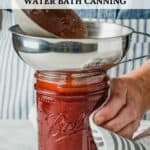
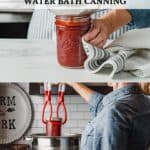
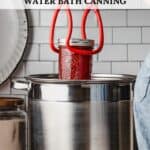
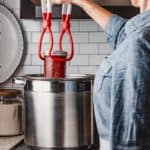
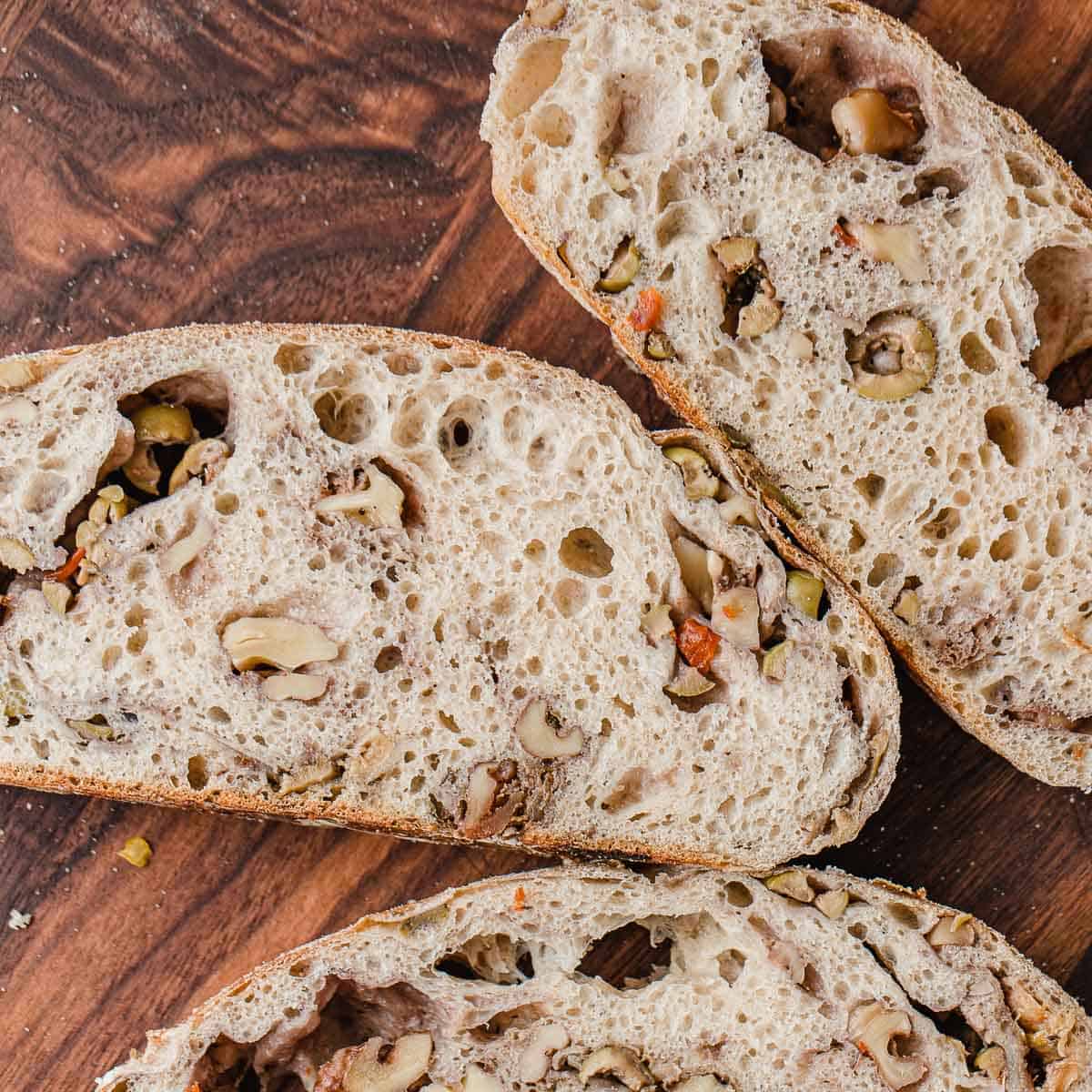
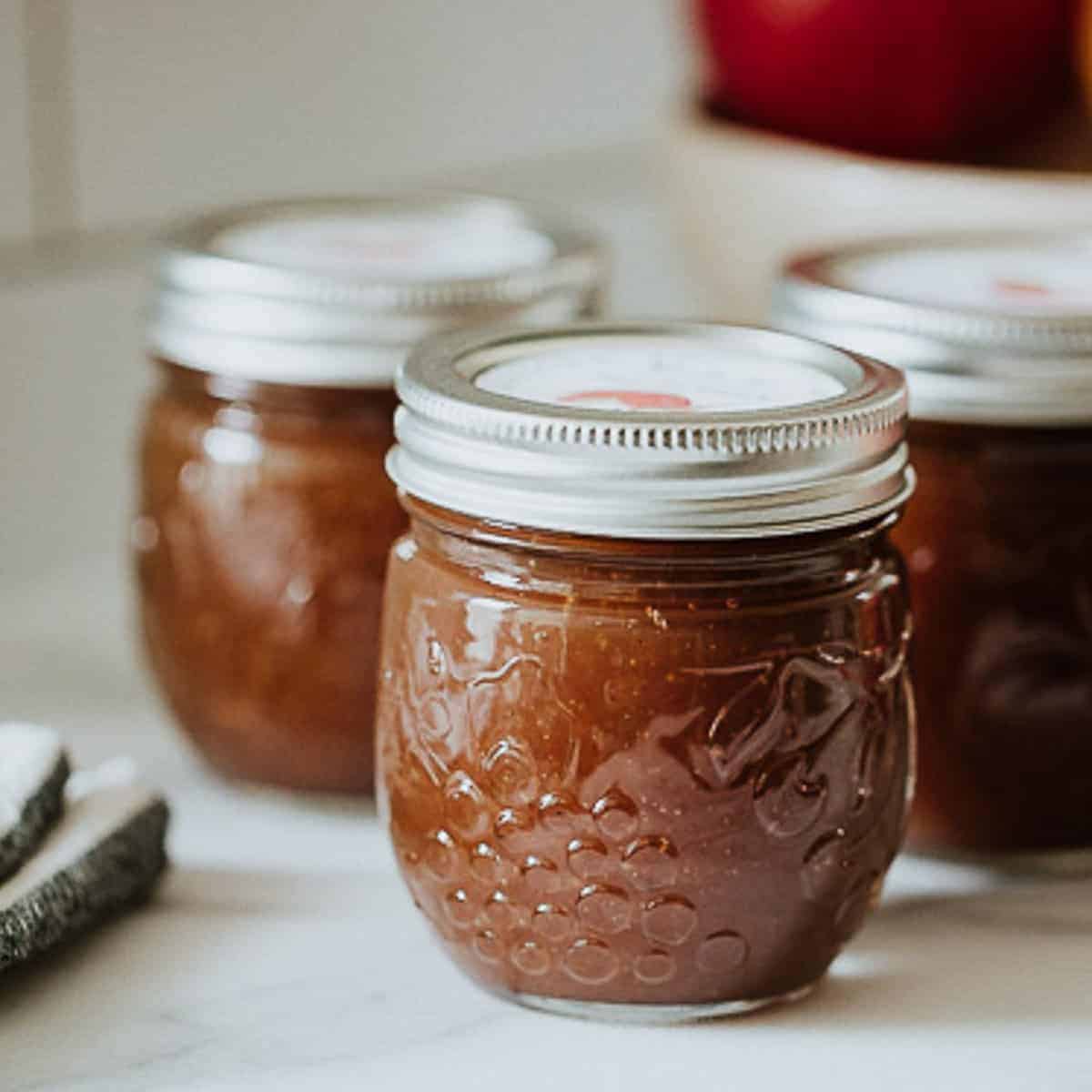
Daphney says
Amy, Thanks so much for the really easy to follow explanation and tips about/on water bath canning. Probably the best advice I have come across 🙏
Tom Zwart says
Some of my jam jars started sealing (ping) before I could get them into the water bath…is this ok?
Amy says
Yes it's ok, but still go ahead and process them!
Christina H. says
Hi Sally. I love the marble in your kitchen. Can you tell me what kind it is, and have you had any problems with it? Your blog is wonderful, and it was a help to me today as I was making pickles and needed a little refresher. Thanks so much!
Amy Duska says
Hi Christina! It's actually not marble, it's laminate countertops!
Amy Duska says
Thanks Sally!
Kelly Rodrigue says
Thank you so much for such an informative article. I was interested in canning but didn't know where to start! This is complete from A-Z. Can't wait to get started! Thank you.
Amy Duska says
Thanks Kelly! Feel free to ask questions once you get started! 🙂